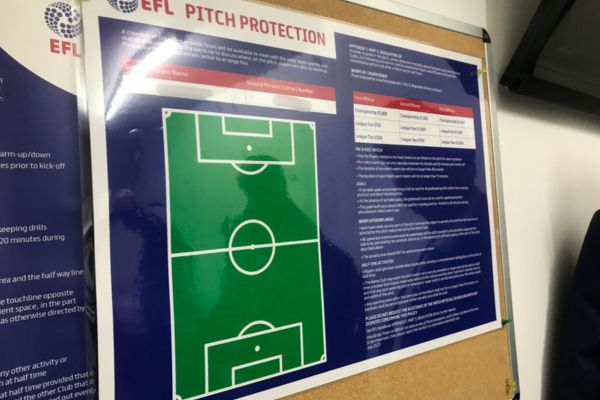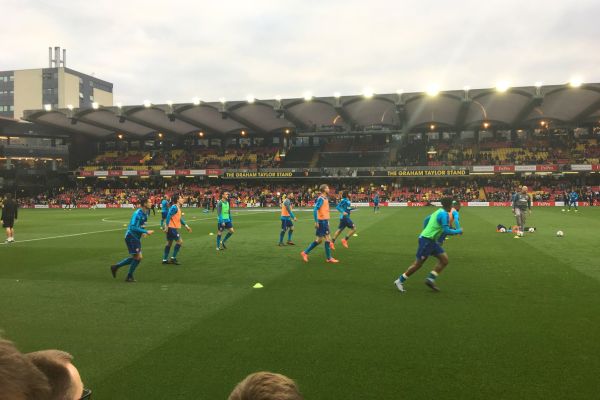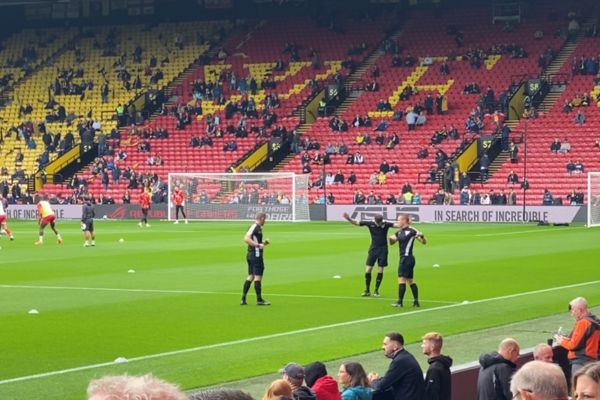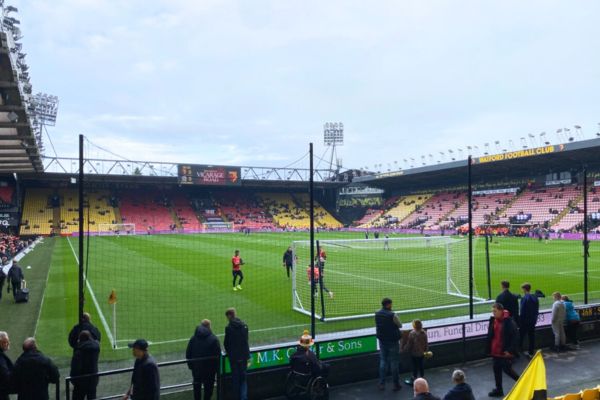“Follow me this way please,” said the Tour Guide as a curious group of about 10 people, including myself, shuffled their way past the door held open by the guide and into a narrow corridor.
“If you want, I can lock you in here for the night,” the guide chuckled. I looked around and found I was the only one left in the room. The room in question was a very basic, and one would say, very barren away team dressing room at Loftus Road Stadium, home of Queens Park Rangers. I had been shocked at how primitive it was in comparison to the plush and well-equipped home dressing room we had been in earlier. “QPR were really trying to squeeze every advantage possible,” I thought to myself.
I had been busy taking a few quick photos of this barren space, with just wooden benches, a massage table, a small shower, one toilet, and two urinals. “Sorry,” I said, looking toward the guide. I quickly made my way where the rest of the group were patiently waiting.
The guide closed the away team door and took a few paces past the group, immediately opening the next door on the left. Again, the group shuffled into a smaller, more narrow room but with slightly better amenities than the away dressing room.
“Welcome to the match officials’ room. This is where the referees seek refuge,” the guide joked before continuing to mention how the room is used, as well as some other facts, before pointing towards the wall near the door we had just walked past to get into the room. We all turned our heads to look.
“This is an informational poster for the referees, related to Pitch Protection. Do you know what that is?” We all shook our heads. “I’d heard of the phrase ‘Player Protection’ but not Pitch Protection,” I thought.

“Well, it helps both the referees and the players know where they should be warming up. This helps ensure they don’t damage certain parts of the pitch,” the guide explained as a confused look covered my face, as well as those of the rest of the group. He continued to explain further, and we all listened intently.
So, what is Pitch Protection?
I’ve been to plenty of games, usually arriving at least 20-30 minutes before kick-off. I hate to be one of those late arrivals that disturbs everyone sitting comfortably after the game has kicked off. Anyway, those of us that arrive early will usually see both teams coming out to warm up before the game, as well as the referees. But what you may not have noticed is where they are warming up and what warm-up drills they are doing.

You see, across the EFL and in other leagues, rules have been implemented to help preserve the condition of the pitch and try to ensure it remains as pristine as possible for match day. The main function behind it is to maintain a playable pitch for the match and to avoid unnecessary wear in specific areas, particularly the goalmouths and penalty zones. Those of a certain age will remember times before the advanced pitch technology we have today, like Desso pitches. By the end of the season, after so much playing time, pitches had little in the way of grass, especially in the goal areas. One popular solution to stop this dirt turning into mud on a rainy day was to cover it all in sawdust.
That said, pitches today have advanced, and with artificial lights, they are more pristine than ever. Groundsmen worldwide are receiving prizes for the pitches they love and care for. But back to Pitch Protection.

The overall goal of the Pitch Protection concept is to create habits that players and coaches follow to respect the pitch and avoid damaging areas critical for gameplay. In order to do so they are given rules to follow regarding when and where to warm up, as well as designated zones for different drill exercises.
Lets take a look at some of these rules.
The Key Rules Under Pitch Protection Regulations:
-
Warm-up Timing: Teams can only start warming up 45 minutes before kick-off, and the warm-up must end 10 minutes before the game begins. The session should last no more than 30 minutes.
-
Goalkeeping Drills: Goalkeepers can use the goalmouth only for crossing practice or if no portable goals are provided. These drills should not exceed 20 minutes.
-
Location of Warm-ups: Players must use only designated areas, such as between the penalty area and halfway line. Speed drills should be performed off the pitch, not on the field.
-
Warm-downs: After the match, warm-downs should last no more than 15 minutes, and the penalty areas should not be used.
-
Half-time: If teams warm up at half-time, they must consider other activities happening on the pitch and not disrupt them.
Punishments for not following these rules can include fines. Hence, the poster I saw that afternoon in the Referee’s room at Loftus Road. Referees also have a designated area to warm up and can fall foul of the rules too.

Fines are actually a rarity. So next time you arrive early for a match, take a moment to observe where the players are and what they are doing. All should be following the rules of Pitch Protection.
And by the way, if you haven’t been on a stadium tour of Queens Park Rangers Stadium, it is most certainly recommended. You will feel sorry for the visiting teams that play there, though.
Now, while Pitch Protection is all about keeping the hallowed turf of a football pitch safe, some of our stadiums have stories beneath their surface that are just as fascinating. In some of the Stadium Stories we feature, digging up the pitch uncovered secrets like the hidden history beneath El Monumental. Curious about what lies beneath? Check out our Stadium Stories section for more!
